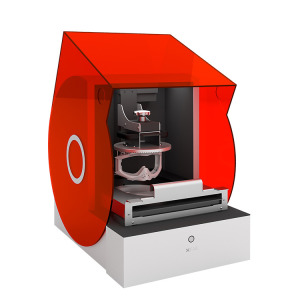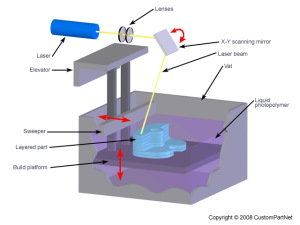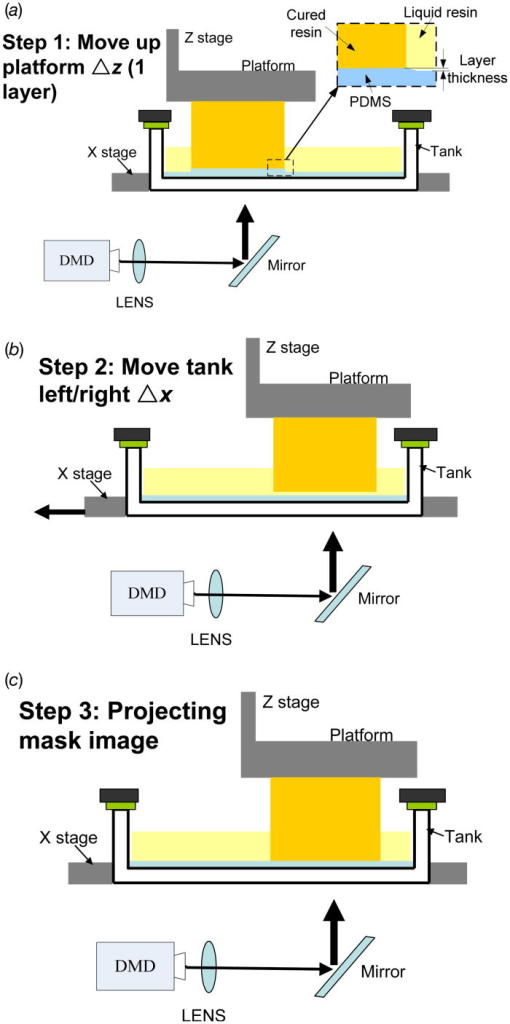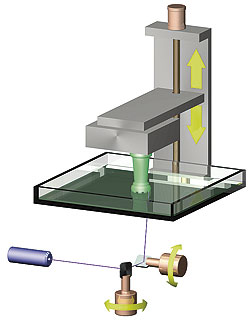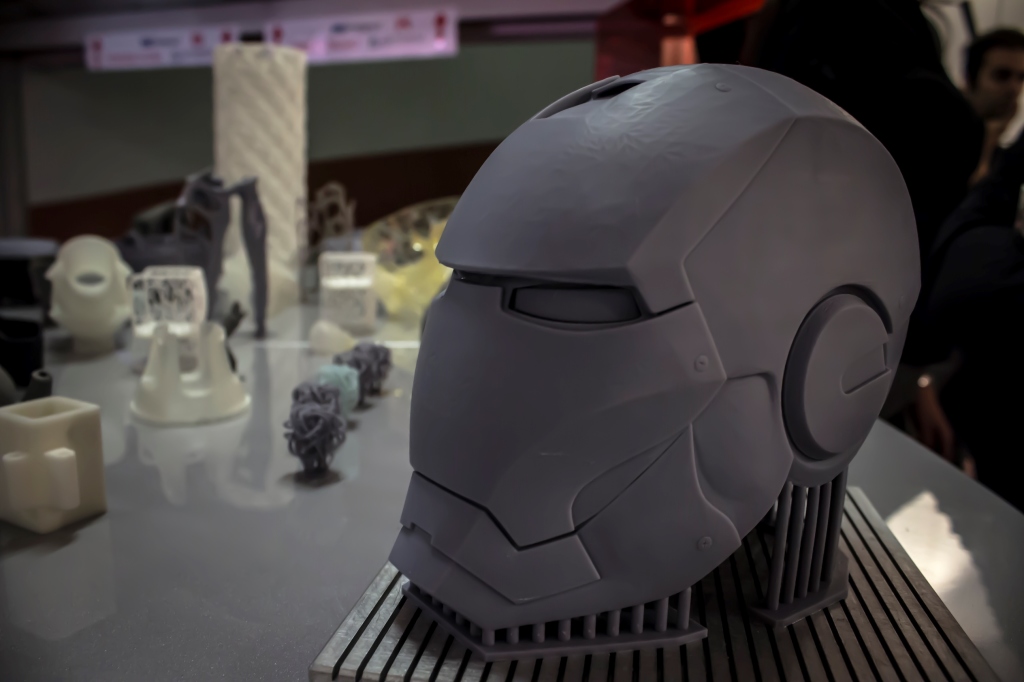Forward
DWS, Digital Wax Systems, is an Italian company based in Zanè, in the province of Vicenza, specialized in the realization of professional 3D printers based on the laser stereolithography technology which find application in jewelry, dental and industrial design fields.
Now DWS has transferred its know-how in a desktop machine, designed for the consumer market, or, better, prosumer market, consisting of advanced makers, artisans, fab labs, small firms, which will be available in early 2015 at a price of about 5000 euros, not exactly cheap, but definitely affordable and justified by the high-tech and the remarkable printing resolution and precision witnessed by a minimum layer thickness of 10 microns.
How it works
The laser stereolithography (SLA) method has already been described in the article by Fabio Nelli on rapid prototyping, whose link is below.
The working principle of a 3D SLA printer is based on the concentration of an ultraviolet laser beam on the surface of a tank filled with photopolymer resin or other liquid photocurable material. The surface of the liquid, at the points where it is hit by the laser beam which is guided by the X-Y scanning system, solidifies instantly. After the complete solidification of the layer of material, the Z coordinate of the platform on which the object being fabricated and its supports, made of the same material of the object, are positioned changes by a value equal to the thickness of the next layer: in this way the three-dimensional object is built as a sequence of layers.
In a traditional SLA printer (if you can consider in some way traditional a laser stereolithography 3D printer…) the platform which the object solidifies layer by layer on moves downwards sinking into the tank containing the liquid photo-polymer (Fig. 2). As a consequence the tank must be filled with a volume of liquid corresponding to the overall height of the complete object and the object itself must be cleaned from the liquid resin when removed from the tank. The liquid resin remaining in the tank can be reused, but with this procedure it is necessary to use a resin volume much greater than the one of the whole solid object.
In XFAB the liquid photo-polymer is poured into a transparent tank, this fact allows the light beam, emitted by a Class 3B UV laser source (that is, according to IEC EN 60825-1 and ANSI Z136.1, a source that is normally hazardous to the eyes when direct radiation or specular reflection occur but not in the case of diffuse reflection from an opaque surface), named Solid State BlueEdge® BE-1300X and placed under the tank, to pass through the tank itself upwards and solidify the above liquid layer. Once the solidification of the layer is complete, the support platform of the object rises up by an amount corresponding to the thickness of the solidified layer (Fig. 3).
The described configuration prevents the immersion of the object in the liquid photo-polymer; in addition, at the end of the printing process, the residual volume of liquid in the tank is very limited, which makes it much faster the replacement of the print material.
The X-Y laser scanning unit, placed under the tank, is galvanometer type: the laser beam is deflected by the mirrors mounted on the heads of two galvanometers, one rotating around the X axis, the other around the Y axis (Fig. 4); the angle of rotation and the direction of rotation of each galvanometer are determined by current intensity and polarity of applied electric currents.
As anticipated the strong point of XFAB is the high print resolution, with printed layer thicknesses between 0.01 and 0.1 mm, depending on the material used, and a “minimum feature size”, which defines the minimum size of the details of the built object, equal to 0.08 mm. The pictures below, showing objects made up with XFAB, show the print quality better than the above data can do.
The working area is cylindrical, measuring 180 mm in diameter by 180 mm in height, and it is more than suitable for the realization of a good variety of medium size objects.
As expected, the XFAB has a dedicated management software, named Nauta XFAB, for the acquisition and editing of 3D files (.stl and .slc formats) and the automatic generation of the support elements.
The main technical specifications of the printer, taken from official XFAB site http://dwslab.com/xfab/ are shown below.
| 3D printing method | Laser Stereolithography |
| Working area | Ø 180×180 mm |
| Laser source | Solid State BlueEdge® BE-1300X |
| Slice thickness | 10-100 µm |
| Minimum feature size | 80 µm |
| Scanning method | Galvanometer |
| Software | XFAB Controller, Nauta™ XFAB Edition |
| Input file format | .stl, .slc |
| Machine size | 420x638x590 mm |
| Operating Temperature and Humidity | 22°-25°C/60% |
| Power supply | AC 230/115V/50-60 Hz |
The range of usable materials includes various kinds of photo-polymers filled with elastomers, nanoceramics and other functional components for a total number of nine materials.
Conclusions
XFAB is one of the first attempts by the side of laser stereolithography to break into the consumer market, so far monopolized by printers using fused deposition modeling (FDM) technology, pointing to those who, not fully satisfied with the print quality obtainable with the latter, are willing to a more onerous, though reasonable, outlay in order to make an important technological step. For its part, this printer has what it takes, first of all the technical characteristics of a professional machine, to succeed in carving out its own space with a good sales volume and contribute in the near future to a revolution in the revolution: making laser stereolithography truly accessible to everyone.[:]
